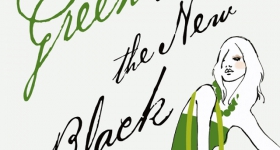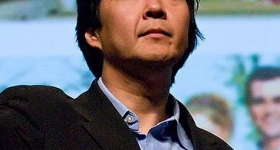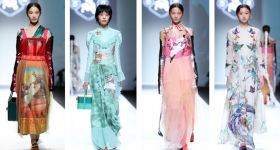AS THE GENERATION of Tom Ford and Marc Jacobs passes by. who will be America's next top fashion designer?
With celebrity fans, robust sales numbers and the support of Anna Wintour. many of the contenders just happen to be Asian American.
With their Innovative yet wearable designs for women, Doo-Ri Chung, Derek Lam. Phillip Lim. Thakoon Panichgul and Peter Som have become fashion darlings. Part of an aesthetic shift in womenswear toward clothes that celebrate a modern and playful femininity, these designers shed the va-voom sexuality and minimalism of the late '90s with a more modest take on the female form, and value sophisticated construction and layering.
All come with the industry's stamp of approval: nominations and awards from the Council of Fashion Designers of America Awards and the CFDA/Vogue Fashion Fund. At the 2007 awards-the Oscars of fashion-Lim claimed the top prize for emerging talent, the Swarovski Award for Womenswear. Panichgul was also nominated in the category.
The Fashion Fund annually selects one emerging designer to receive up to $200.000 and mentoring from industry professionals-not to mention the favor of Vogue Editor-in-Chief Anna Wintour. who is on the committee.
"It's an incredible gift for a young designer." Nandini D'Souza. senior fashion features editor for industry trade journal Women's Wear Daily.
In 2005. at age 31. Lim started phillip Nm 3.1 with his business partner. Wen Zhou. The fashion press praised his highly attuned radar for how women want to dress-and how much they are willing to spend.
"As much as I try to fantasize. I always try to design clothes that real people actually wear," Lim says. His balance of chic and wearability is achieved at a relatively affordable price ($300-$600) for designer clothing that debuts with Fashion Week runway shows and receives regular Vogue coverage.
Lim's mother was a seamstress, which may have influenced his deep respect for those who make clothes. "In my personal process, the patternmakers and seam-stresses are the most influential in the process." Lim says. "The beauty lies as much in the process as in the final product."
Likewise. Panichgul's background also contributes to his designs, which are often described in the fashion press as ethereal. "Respect and formality are very inherent in Thai culture, especially in Thai women, so there is a sense of refinement that crosses over into my work." Panichgul says.
These new designers join the ranks of veterans Yeohlee. Anna Sui and Vera Wang, who paved the way for Asian American designers. More are on their way: 43 percent of students enrolled in Parsons the New School for Design's fashion programs last winter were either Asian or Asian American.
"It is fantastic that Asian American designers are starting to take steps to establish themselves as leaders and even more amazing that we are being recognized as part of the new generation as a whole-who are seen as leading the way. It is a positive sign of how far we have come." says Lim, who is once again a CFDA/Vogue Fashion Fund finalist this year, with the winner to be announced this winter.
These upstarts are part of an ever-expanding community of Asian American designers, which includes Richard Chai, Monique Lhuillier, Mary Ping, Alexander Wang, Rachel Roy and Jean Yu. The seminal moment for Asian designers can be traced to the debuts of Japanese designers Hanae Mori, Issey Miyake, Yohji Yamamoto and Rei Kawakubo in New York and Paris in the late '60s to early '80s. Today, Asian designers worldwide are achieving prominence, like Paris-based Singaporean Andrew Gn and Yeojin Bae in Melbourne.
Asians and Asian Americans are also increasingly visible in other spheres of fashion-models Hye Park, Du Juan and Han Jin are featured in major runway shows and luxury ad campaigns, and the Western fashion press has recently arrived in Asia with titles like Vogue China, W Korea and Elle India.
But "fashion has always embraced diversity." argues Panichgul. "It was more forward than any other industry earlier on, because fashion is so subjective and so creative and there's always newness. Yves Saint Laurent was using black models in the '70s."
While the runways are still far from diverse, at least there are more people of color behind the curtains.
Shelley Wong lives in New York City and writes for nylonmag.com.









Comments